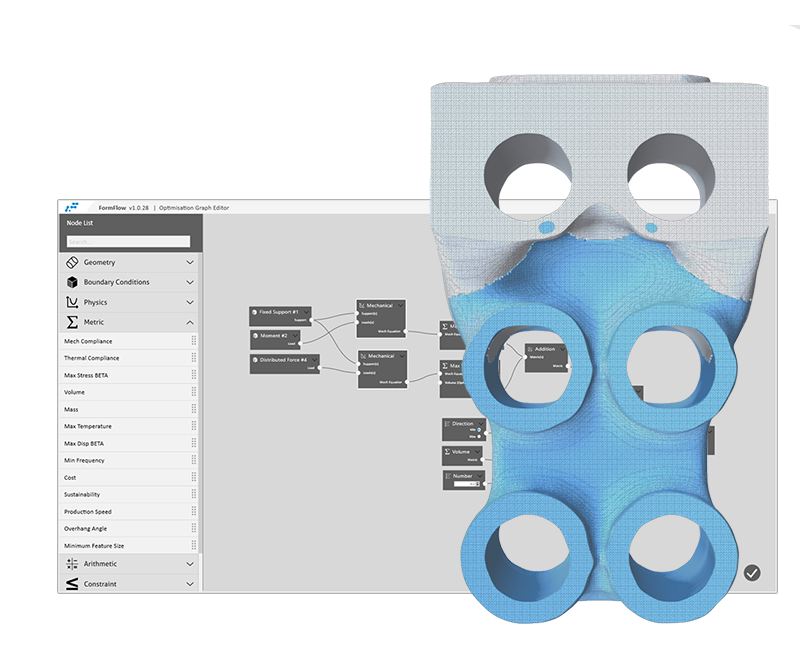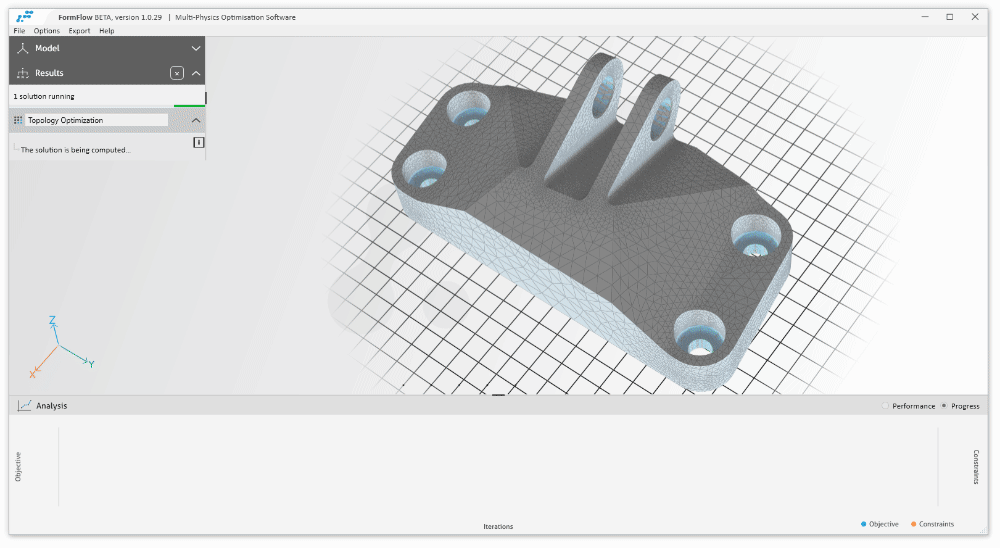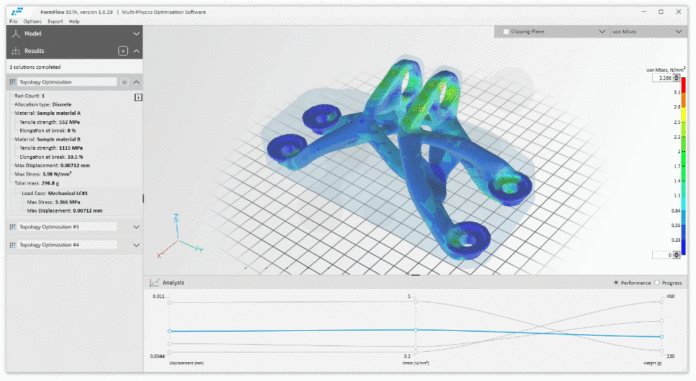Additive Flow’s Formflow delivers 50%+ cost savings, exceeds sustainability goals, and meets the demands of innovators and manufacturers.
Early at the beginning of the year, UK-based software company Additive Flow officially debuted on the Additive Manufacturing industry. With the goal of addressing additive manufacturing challenges faced by engineers – experts or beginners -, the Additive Flow team has been developing its ‘Formflow’ optimisation software.
Today, the developer of advanced optimisation software unveils an upgraded version of its solution that enables now multi property optimisation, a feature that is quite timely as producers are increasingly looking to produce multi-functional parts that would integrate varying properties based on local engineering requirements.
The only thing is that, meeting this requirement mainly depends on how the software will operate throughout the digital workflow, hence the development of a multi-property optimisation feature.
How does it work?

The multidisciplinary team at Additive Flow has imagined a solution that will balance performance and cost saving – the Holy Grail for engineers – while meeting material properties where needed. The software therefore offers accessible interface for multi objective optimisation enabling users to easily adapt to their various optimisation goals and constraints. Thanks to algorithms, engineers can allocate multiple material properties (via lattices, build-parameters, and materials) simultaneously with topology. Last but not least, the software provides multi-physics capability tightly coupled with as-printed material properties.
According to Additive Flow, impossible tradeoffs between sustainability and costs, or product performance and manufacturing lead times – are often a source of problems within organizations, no matter their size is.
Problems that lead to many iterations, revisions, and redesigns based on the different choices of inputs (safety factors, materials, geometry constraints) and their implications on shapes, procurement, and profitability – which bounce back and forth between teams – increasing costs, while limiting innovation. Amid this complexity, considerations such as environmental impact can be missed.
As part of a beta organisation programme, several organisations including the Manufacturing Technology Centre, Comeragh Composites, Rosswag, Saint-Gobain Ceramics, 3DGBIRE and Andiamo have had the opportunity to utilize Formflow.
Alexander Pluke, CEO of Additive Flow says, “The engineers and businesses we’ve spoken with want to do better when it comes to harnessing innovation and sustainability, but are too often caught between their time limits, cost considerations and performance needs. Engineers have been calling out for a tool that can help them address these challenges, and we have had great feedback from our users on the new frontiers now available to them with Formflow’s capability”.
How does Formflow stand out from the crowd?

Most software vendors provide their software with predefined ‘one size fits all’ settings, which does not often enable workflows to simulate and optimise designs, production, and supply chains, making it more complex to meet the requirements of a company.
Additive Flow on the other hand, strongly believes in repeatable Optimisation workflows. Not only can they be easily edited, retained, and shared amongst teams – for maximum productivity, automation, but they also enhance the digital thread. They specify the exact requirements you are looking for on local regions of engineering parts, while optimising for specific business needs like cost and sustainability.
An example of the impact Additive Flow’s software has had on businesses beyond Additive Manufacturing is Comeragh Composites. Findhan Strain, Director, Comeragh Composites states:
“The analysis carried out with Additive Flow’s software helped reduce manufacturing costs by 50% and saved weight by 60%, by simplifying the injection moulding process and enhancing our ROI with multi- property composites. Of even greater interest was that the process opened my eyes to what is feasible – on larger and more complex components with potentially even more significant advantages using Additive Flow’s software. You can simplify your supply chain by adopting a new approach to material use and selection.”
From composites manufacturing to vertical industries such as healthcare, Formflow opens new frontiers for users while achieving high manufacturing performance.
Naveed R. Parvez, CEO of Andiamo explains the impact this has had on their team, “Healthcare globally is in need of radical solutions to meet mounting pressures. We need everyone to focus on the outcome and not the process. This is a philosophy we share with Additive Flow and proved to be instrumental during a large multi year NHS project. Clinicians told us that they were often trying to avoid a condition getting worse. With Additive Flow we could now optimise for improvement whilst still meeting all the clinical and engineering requirements. With Additive Flow we saw processing speed improvements of up to 5x which allowed us to increase our productivity by at least 30% per engineer – ultimately allowing us to treat more people more quickly.”
“We have built our solvers from the ground up to be both highly computationally efficient and achieve the demanding goals of our customers. This means compelling performance and robust accuracy against benchmark results”, Charles Fried, CTO at Additive Flow concludes.
Remember, you can post free of charge job opportunities in the AM Industry on 3D ADEPT Media or look for a job via our job board. Make sure to follow us on our social networks and subscribe to our weekly newsletter : Facebook, Twitter, LinkedIn & Instagram ! If you want to be featured in the next issue of our digital magazine or if you hear a story that needs to be heard, make sure to send it to contact@3dadept.com






